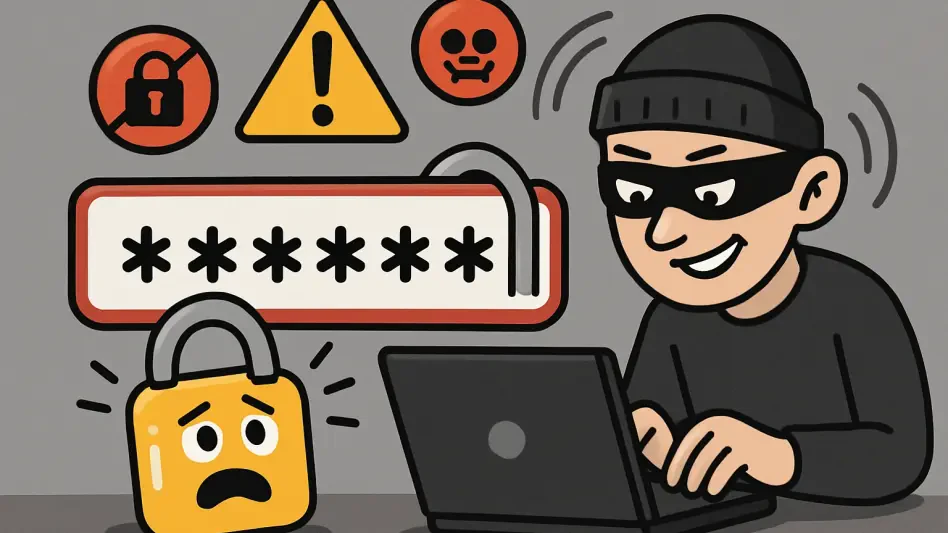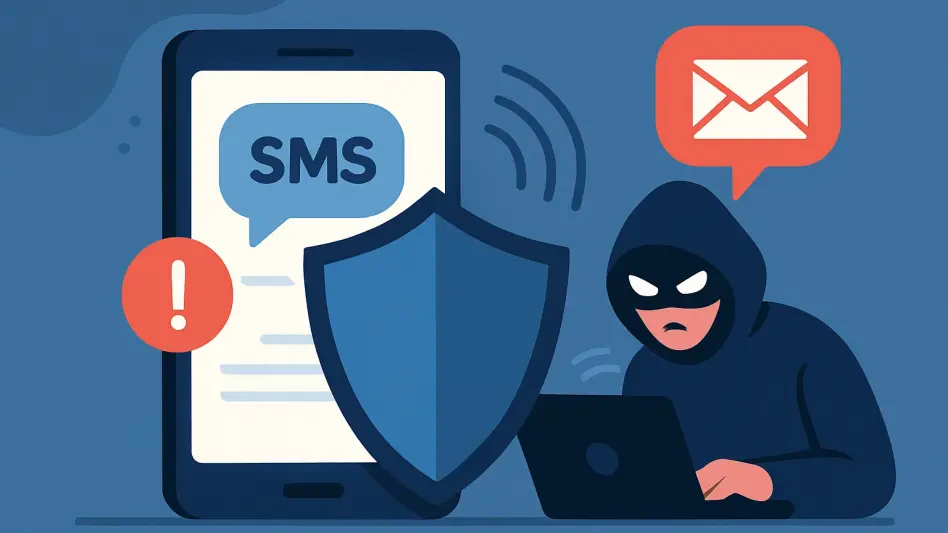In 2025, the struggle against weak password practices continues, as a vast amount of newly exposed credentials reveals that users overwhelmingly opt for simplicity and reuse. Despite advancements in cybersecurity, the ongoing trend underscores a dire awareness gap and the pressing need for robust authentication methods. Recent leaks have exposed over 19 billion passwords, with an overwhelming 94% being reused or duplicated. The evident preference for lazy keyboard patterns, like “123456,” paired with the frequent inclusion of names such as “Ana,” highlights the security vulnerabilities persisting in the digital age. This predicament is exacerbated by several high-profile breaches, including data spills from companies like Snowflake and SOCRadar.io, which have provided cybercriminals with an abundance of personal and sensitive information.
The Cybernews research team’s findings illustrate the depth of weaknesses in password creation, with only 6% identified as unique. Information security researchers, like Neringa Macijauskaitė, underline the widespread adoption of weak passphrases, noting the growing reliance on two-factor authentication as a vital protection measure. Despite continuous educational efforts aimed at enhancing password security, progress remains stagnant, necessitating a shift toward more secure authentication methods. The research outlines critical flaws and suggests that addressing these issues is paramount for improving overall cybersecurity measures.
1. Utilize Credential Vaults
Implementing credential vaults is a pivotal measure organizations and individuals can adopt to bolster password security. These tools are designed to generate and manage unique, strong passwords for each service, thereby minimizing the risk of using identical credentials across multiple accounts. Credential vaults work by securely storing these complex passwords, ensuring easy access when needed without the burden of memorization. By leveraging cryptographic techniques, credential vaults safeguard stored passwords, preventing unauthorized access and potential leaks.
Users can benefit immensely from employing credential vaults, as this practice drastically reduces the temptation to reuse passwords—a common weakness among netizens. Password managers automate the process of prioritizing robust security, crafting lengthy and intricate passwords that security experts recommend. With technology becoming more intertwined with daily life, utilizing credential vaults not only enhances individual security but also strengthens organizational defenses against cyber threats. This proactive step toward password management presents a seamless integration into existing systems, offering a comprehensive solution for managing multiple credentials securely.
2. Avoid Reusing Passwords
Avoiding password reuse is a fundamental aspect of modern cybersecurity practices, as unique passwords provide a strong barrier against unauthorized access. Ensuring each password is distinct, with a minimum of 12 characters, combining uppercase, lowercase, numerals, and special symbols demands diligence but affords significant security advantages. Recognizable strings, including names, sequences, or patterns, must be shunned to bolster defenses against credential-stuffing attempts. These attacks typically exploit the vulnerabilities associated with reused passwords, enabling attackers to quickly access multiple accounts with a single compromised credential.
Developing a conscientious approach to password creation fosters a culture of security awareness, reinforcing the importance of distinctive passphrases for different platforms. This strategy demands incorporating diverse elements into passwords to create unpredictability, serving as a deterrent to brute force and dictionary attacks. As technological infrastructures grow increasingly complex, utilizing strong, singular passwords emerges as a critical component in safeguarding personal and professional data. This approach not only mitigates risk but also establishes a standard that elevates overall cybersecurity resilience.
3. Activate Multi-Factor Verification
Multi-factor verification presents an additional layer of security essential for fending off unauthorized access, even in scenarios where passwords are compromised. By requiring more than one form of authentication, such as a PIN or biometric input, multi-factor verification complicates attempts to breach systems, thus enhancing security protocols significantly. Implementing this strategy across platforms is a prudent and effective measure, discouraging unauthorized access attempts and ensuring only verified users gain entry to sensitive data.
The integration of multi-factor verification reflects a proactive approach to security, acknowledging the escalating sophistication of cyber threats. This security measure offers a critical safeguard, fortifying both individual and organizational defenses against potential breaches. As digital environments evolve, the adoption of multi-factor verification becomes increasingly vital, conveying a commitment to preserving the integrity and confidentiality of information. By reinforcing security frameworks with multi-factor systems, users and entities can attain greater peace of mind, knowing their digital assets are well-protected.
4. Impose Strong Password Guidelines
The imposition of stringent password guidelines within organizations is crucial for establishing a strong security posture. Mandating that passwords are at least 12 characters, with a preference for 16, involves utilizing a carefully balanced mix of capital and small letters, numbers, and symbols. Complexity is prioritized over length, a principle that significantly reduces the likelihood of successful infiltration through brute force or dictionary methods. Strong password protocols instill a sophisticated level of security that actively deters malicious attempts.
Organizations must recognize the ever-present necessity of enforcing these guidelines, emphasizing the creation of passphrases that are both hard to decipher and easy for users to remember. The establishment and maintenance of robust password policies not only safeguard organizational interests but also promote awareness among users, equipping them with essential knowledge to protect their personal data. Implementing dependable password standards is fundamental in preventing breaches and ensuring systems remain secure in the unpredictable landscape of digital security.
5. Use Secure Data Protection Methods
Efficient data encryption and secure protection techniques are imperative in shielding sensitive information during transit and storage. Organizations are encouraged to employ cutting-edge data protection methodologies and routinely assess existing security standards to detect vulnerabilities. Advanced cryptographic algorithms should be utilized to encrypt data, ensuring it remains inaccessible to unauthorized entities. Realizing secure data protection requires a holistic approach, embracing the latest technologies and strategies that fortify defenses against cyber threats.
Continuously reviewing and upgrading encryption technologies remains vital as attackers persist in developing more sophisticated tactics. Organizations that prioritize secure data protection exemplify best practices, demonstrating unwavering commitment to safeguarding valuable information from breaches. Striving for excellence in data protection involves both adapting to emerging technological advancements and maintaining vigilance toward potential risks. This approach fosters an environment where sensitive data is beyond the reach of cybercriminals, preserving the trust and security upon which modern digital interactions depend.
6. Regularly Review Access Permissions
Frequent reviews of access permissions constitute a proactive measure that significantly enhances a company’s security framework, minimizing the risk of personal data exposure. Conducting regular security assessments allows organizations to identify unauthorized access attempts and rectify vulnerabilities promptly. These reviews facilitate robust access control, ensuring only those with legitimate needs can access sensitive information, thereby fortifying defenses against potential breaches.
The consistent evaluation of who has access to what information empowers organizations to pinpoint and address weaknesses that may compromise data integrity. By leveraging insights gained from these reviews, entities can refine processes, streamline security protocols, and enforce policies that enhance the overall security posture. Regular access permission assessments epitomize a commitment to meticulous data protection and reflect a strategic approach to safeguarding digital assets in a constantly evolving cyber threat landscape.
7. Stay Alert to Data Breaches
Remaining alert to data breaches and reacting swiftly is crucial in reducing their harmful impact. Organizations should implement solutions that can immediately identify compromised credentials. This allows for timely actions like denying access or requiring password updates for impacted accounts, supporting a proactive approach to cyber threats and lessening attackers’ chances.
Rapid detection and response not only mitigate possible damage but also demonstrate an organization’s commitment to maintaining high security standards. By using real-time monitoring systems to spot anomalies or unauthorized activities, companies can prevent significant losses and protect their reputation. Promoting a culture of vigilance reinforces an entity’s dedication to shielding sensitive information from the risks prevalent in the digital world. Prompt steps upon discovering breaches strengthen defenses against the constant threat of cyber intrusions.
In summary, analyzing trends in weak password habits through 2025 reveals a common weakness in digital security, emphasizing the need for increased awareness and strong protocols. Research showed the widespread reuse of simple passwords with predictable patterns, which makes accounts vulnerable to cybercriminals. Tackling these problems with strict password guidelines, advanced data protection techniques, and diligent monitoring can turn insights into meaningful security improvements. Although password security remains a significant challenge, adopting these suggestions can create a safer digital space, reducing the likelihood of unauthorized access to important information.








